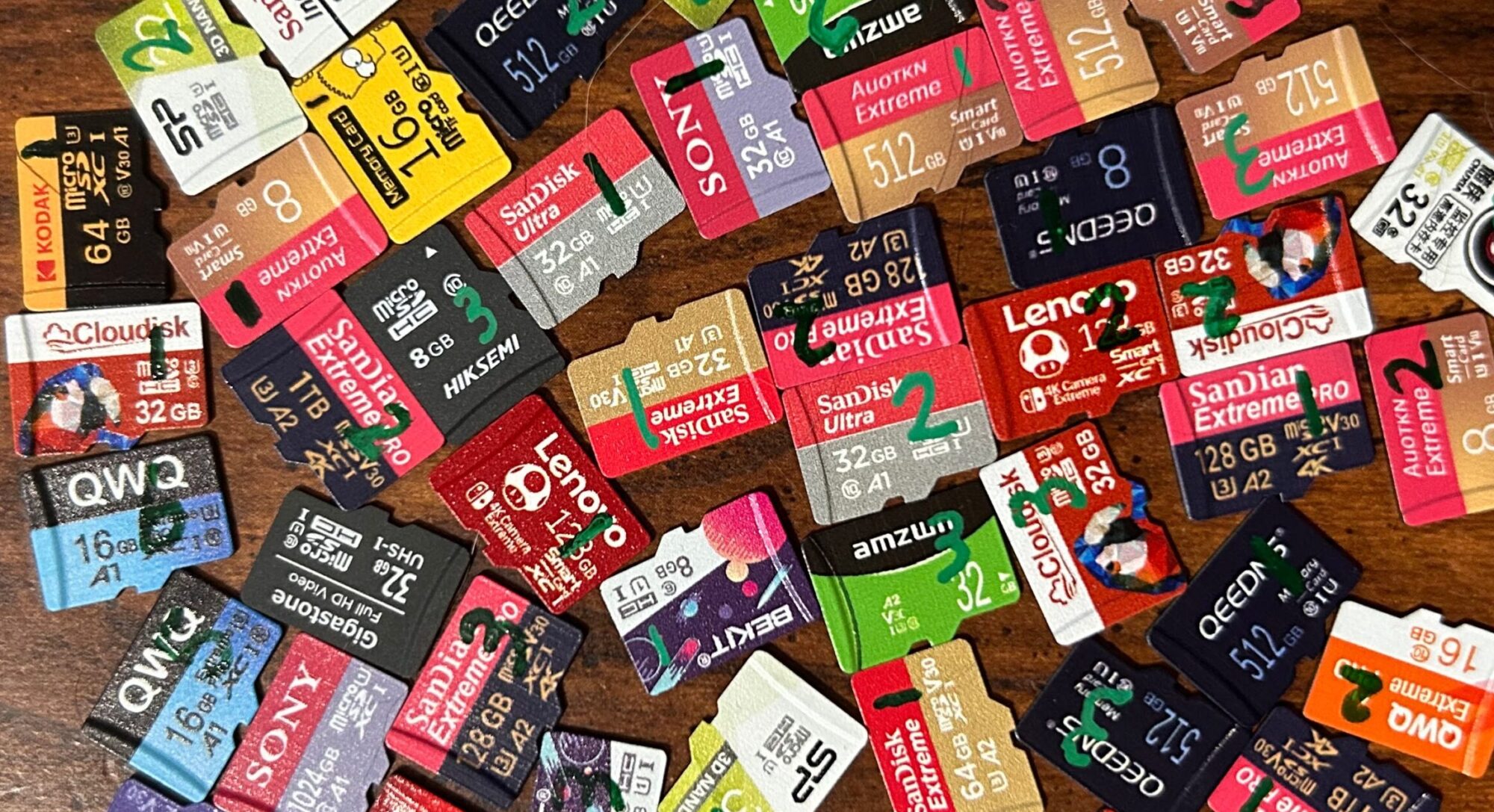Reletech is a brand that I discovered through (what would become) AliExpress’s Dollar Express section.
Their product packaging was a little unusual — it had a mixture of English and French on it, with an office address in Germany printed on it. This leads me to believe that they wanted buyers to think that they were a European brand — but then someone ruined the illusion by slapping a sticker overtop of it that said “Shenzhen Guanlin International Trade Co., Ltd”.
On the performance front: results were mixed, ranging from “average” to “poor”:
- Sequential read: Sample #3 had a result that was significantly slower than the rest, putting it in just the 13th percentile. The other two samples had results that were in the 43rd and 52nd percentile.
- Sequential write: All three results were clustered kinda closely together, ranging from the 15th to the 25th percentiles.
- Random read: All three results were clustered kinda closely together, ranging from the 27th to the 40th percentiles.
- Random write: All three results were clustered pretty closely together, ranging from the 32nd to the 38th percentiles.
These cards carry the Class 10, U3, and A1 marks. All performance results were enough to qualify it for the Class 10 mark. None of the results were good enough to qualify it for the U3 or A1 marks. I’ll throw in my standard disclaimer here: my performance testing methods do not align with those prescribed by the SD standard; it’s possible that they would have performed better had they been tested under proper conditions.
On the endurance testing front:
- Sample #1’s first error was a four-sector wide address decoding error during round 1,523. It continued to chug along until round 7,294, when it suddenly stopped responding to commands. By that point, only about 0.98% of the card’s sectors had been flagged as “bad”.
- Sample #2’s first error was also a four-sector wide address decoding error during round 1,700. It survived another 5,000 read/write cycles before it decided it had enough and just stopped responding to commands. By that point, less than 0.1% of the card’s sectors had been flagged as “bad”.
- Sample #3’s first error was an address decoding error, that affected just two sectors, during round 4,011. It has survived 9,824 read/write cycles in total so far. (It’s currently experiencing a non-stop cycle of I/O errors — I don’t expect it to get any further before it dies completely.)
Side note: Samples #2 and #3 did technically experience errors earlier on, but I’m almost positive that they were device mangling errors and thus not the card’s fault. Therefore, I’ve decided to discard those errors. I’ve also added code to my program to detect and mitigate these types of errors.
June 21, 2025 (current number of read/write cycles is updated automatically every hour)

